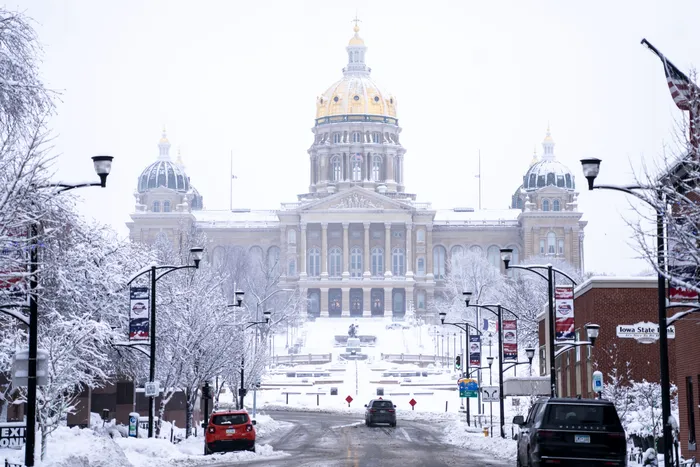
Iowa most likely ends the GOP race before it has had a chance to begin. The party will be weaker for it. Instead of subjecting the front-runner to a meaningful test, this odd exercise amounted to a layup. Trump overperforms in rural areas and among White voters. That’s Iowa to a T.
In the state’s empty reaches, he rolled up majorities worthy of a tin-pot dictator. Take a precinct of Kossuth County, north of Algona, near the Minnesota border. All of 38 voters gathered to caucus, and 33 of them went for Trump. Or the precinct of Appanoose County, down in the southeast corner of the state, that mustered all of 69 voters, with 55 of them choosing Trump.
Huge margins among sparse populations gave Trump an appearance of invulnerability. But the closer the race drew to a population center — someplace big enough to have a Costco or a Chick-fil-A — the weaker he appeared. Haley, the preferred candidate of never-Trump Republicans and independent voters, actually beat the former president in multiple precincts of Des Moines, Iowa City, Ames, Cedar Rapids, Davenport.
Above is the Hawkeye snowy Capitol in Des Moines. The whole of the USA has been gripped in blizzard conditions with a wind chill plunging the temperature to minus 40º Fahrenheit. It probably affected the turnout for the Republican caucus, which was very low comparatively.
Then there is an excerpt from a perspicacious opinion piece in the wake of the Republican caucus, won by Trump. While many outlets described a landslide victory, The Washington Post was more circumspect, considering the low turnout of voters. Iowa is 90 per cent white and therefore hardly representative of cross-sectional America.
Yet it is the first on the electoral slate. Now that the circus has rolled through, it can be forgotten for the next four years. It only has six electoral college votes. It is not a very populous State, with the capital at Des Moines, which reflects its fur trader history as both the Missouri and Mississippi flow through the State.
In colonial times, the river was the conduit between French Canada and Louisiana. As one writer has succinctly put it: Beginning in 1682, France laid claim to the area of central North America which included the vast Mississippi River drainage basin. French colonists moved to the region near the confluence of the Mississippi, Missouri, and Ohio rivers in the latter half of the seventeenth century. French fur traders, trappers, farmers, and Jesuit missionaries came from France, French Canada, and New Orleans to Upper Louisiana (la Haute-Louisiane).
The French had entered the land of the Iowa Tribe in the late seventeenth century; and were followed by a polyglot mixture of French and Spanish. Iowa was part of Upper Louisiana. It was included in the Louisiana purchase when Jefferson purchased the French Territory for 60m francs in 1803 – the Louisiana Purchase. Des Moines itself means “of the monks” and it is suggested this refers to a colony of Trappist monks that settled in the area in the early eighteenth century.
Iowa is one of the major centres, together with Illinois and Minnesota, where soya beans are grown. As one anonymous commentator has said about these farmers, they are all individualist freedom advocates until it comes to ethanol subsidies for their soya beans and then they all become communists.
I went to Iowa in 2009 hoping to catch up with a guy whom I had met at university in the early sixties when he was on an exchange scholarship – it may have been a Fulbright. He was Malcolm “Mac” Rohrborough, and for a brief time we were friendly, even though he was nine years older than myself. He was an expert in early American history, and subsequently published prolifically about the American West, particularly the Gold Rush. I don’t know how we met, perhaps it was during my period as President of the Student Representative Council, and I do remember him in being at my 21st birthday party.
After he returned to the USA, he took up a post at the Iowa State University in Iowa City, a university town in the eastern part of the State. I said to my wife that we should go to Iowa and try to make contact with Mac after almost fifty years. A vain wish. He had retired the previous year as “professor emeritus” and replied he had gone east to retire. No invitation to visit, so we took the hint.
Nevertheless, we stayed at the university hotel, more like a university college, a light airy place, comfortable and cheap – some compensation for missing Mac. Iowa City is not a Trump stronghold. It voted 71 per cent for Biden in 2020 election. By contrast, Iowa voted 53 per cent for Trump and 43 per cent for Biden. Iowa’s current congressional delegation consists of its two senators and four representatives, all Republicans.
In a strange footnote to his Iowan activities, former President Donald Trump thanked ex-hitman Salvatore Gravano for speaking highly of him, which has raised eyebrows on social media. Gravano, also known as “Sammy the Bull,” was an underboss for the Gambino crime family in New York City and worked with the United States government as an informant to take down mob boss John Gotti in the early 1990s. Gravano, who confessed to his involvement in 19 murders, was released from prison in 2017 after being sentenced to 20 years for running an ecstasy ring in Arizona.
I’m not sure how that will play out on the Hawkeyes, especially those who do not quite agree with the Proposition that Donald Is God. But he would not care. He can forget about them now.
Australia is a Foreign Land
Tasmania is the largest Australian island that I have visited. It made me think, as I was reading “The Tiwi of North Australia,” a book by Charles Hart and Raymond Pilling published in 1960 but containing observations about Tiwi Islander culture, that Hart experienced living with the Tiwi between 1928 and 1930 and Pilling in 1953 and 1954.
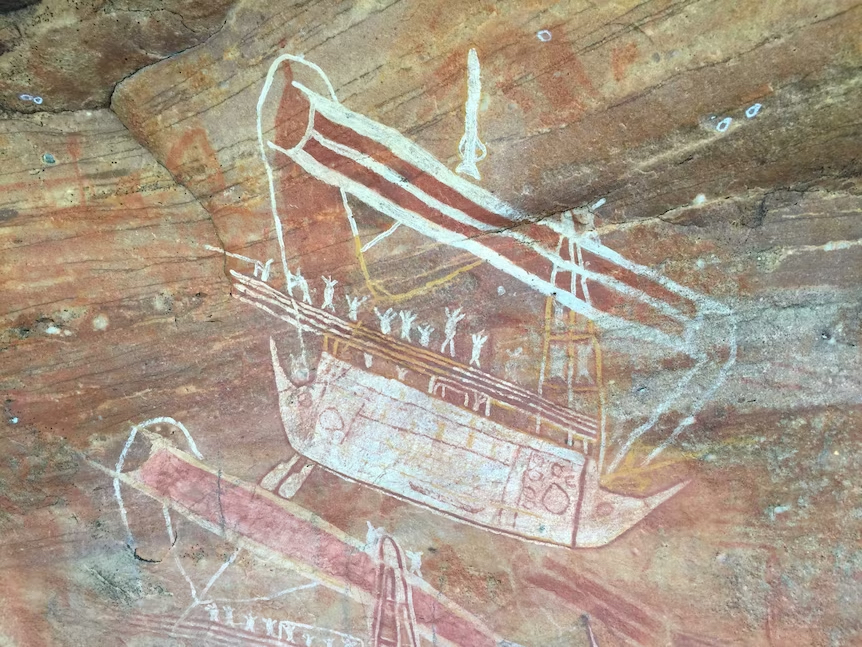
Although I have visited the Abrolhos, Rottnest, Kangaroo, French, Philip, King, Bruny, Cockatoo, Bribie, Brampton, Magnetic, Dunk, Green, Lizard, Thursday and Mornington Islands, I have never visited Melville or Bathurst Islands, which the Tiwi people have inhabited for aeons. To put it in perspective, these islands are eighty kilometres north of Darwin in the Arafura Sea. Melville is the second largest and Bathurst fifth largest after the largest Australian island, Tasmania. They were the first port of call for potential invaders, and well before Cook they had contact with Europeans, as well as the Macassan trepangers.
This experience has given the Tiwi people their distinctive culture with plenty of space in which to roam and develop their cultural identity, which in past twenty years they have successfully commercialised. Yet there is no suggestion that they cultivated “gardens” in the manner of their northern neighbours.
The Tiwi saw the mainland as a foreign land. They were very ferocious in repelling those who dared to land uninvited. They had spears, but not returning boomerangs. The woomera – the spear carrier – did not exist. Nevertheless, they were expert in the use of their spears.
Their culture, as reflected in their artifacts, was highly distinct from other Aboriginal tribes. The Tiwi people are known for their burial poles and their woven baskets. We have collected a wide range of Tiwi art which is characteristically decorated in cross-hatched, geometrical designs encasing dots – white, black and various shades of deep yellow into brown. Ochre and charcoal are the basic materials for the colours, and while I have an ironwood bird, most of the modern sculptured birds characteristic of Tiwi art are now made of lightweight wood. The difference between ironwood and any other wood is very clear when trying to lift any sculpture made of ironwood.
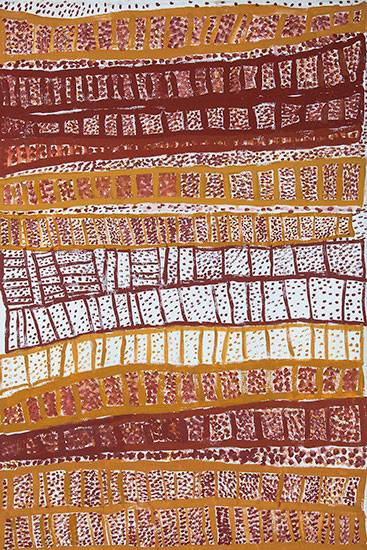
What has bought the Tiwi people into focus was the dismissal in the Federal Court of the claim by three Tiwi who claimed that the proposed Santos gas line would disturb Ampitji, the guardian sea rainbow serpent; and given this serpent would appear not to take kindly to a competing serpent – the Santos gas python – she would inflict cyclones and disease in revenge, a serpentine apocalypse.
The idea that a mythical creature could have halted a major project by a major political donor would seem to go counter to all the neoliberal belief systems that have gripped the country with its own mythology – well who would have thought it! Watch this space to see if there is an appeal to reconcile these myths of sea serpent and neoliberalism.
But then the Tiwi have always learnt a way of accommodating the intruders. As one research paper put it well: The Dutch had come in search of a land which might have possibilities for trade. They found a land which they thought was barren waste, inhabited by people who had no possessions of value for exchange. On Bathurst and Melville islands the Dutch found a people who had a rich and highly developed civilisation, but a civilisation which was so unlike that of the Europeans that the two people were too dissimilar to have anything to offer one another.
The Tiwi also had contact with the Portuguese settlers on Timor, and unlike the Dutch, the Portuguese found the Tiwi made useful slaves, especially when the Tiwi went searching for iron.
Then, before WWII, there was intimate contact with Japanese pearl divers. The Australian Government attempted to prevent this co-habiting between Tiwi women and the Japanese. This had occurred because the quantity of pearl shell inter alia in the Arafura Sea attracted a virtual fleet of Japanese luggers which berthed on the islands. The Japanese provided food in greater and better quality than the Catholic mission – in exchange for young Tiwi women’s sexual favours. This affected the domestic arrangement which the Catholic missionaries, who had come to the Tiwi country prior to WWI, tried to foster among the people.
This situation ended with the outbreak of war with the Japanese in 1941. The islands were bombed, without apparent casualties but in anticipation of invasion by the Japanese military, the Catholic mission encouraged the Tiwi to go bush, very difficult since the Tiwi were now accustomed to being provided with food and tobacco. The invasion never occurred.
The Tiwi people have thrived; and have produced a fine array of champion Australian Rules footballers, but even with their exposure to multiple incursions by Europeans, Japanese and Macassan, they have maintained a distinct cultural identity, which their island isolation had helped maintain while adapting to the whitefellas, who are constantly bothering them – nowadays for a price of being tourists.
Nevertheless, as I continue to think about the Tiwi islands, because of their sentinel position north of Darwin, what of the comparison of the Torres Strait inhabitants? The Torres Strait islands constitute an area of 48,000 km2 but their total land area is 566 km2. By contrast, Bathurst and Melville Islands (with a number of small uninhabited islands) cover 8,320 km2. The population is around 3,000.
The Torres Strait Islander population is more difficult to determine as there are data which seem to be different measures, but there seem to be about 5,000 living on the Islands. However, the 2022 Census seems to suggest that the total number of Torres Strait Islanders is around 60,000 – 70,000 in Australia, which means that there is a large population living away from the Strait.
The Torres Strait population is a mixture of Polynesian, Melanesian and Aboriginal. Tiwi is over 90 per cent Aboriginal. How influential the Japanese have been in part of the heredity of both is a matter of conjecture; but I remember Japtown on Thursday Island and being driven around by a taxi driver, who admitted to mixed Japanese heritage. The effect of Japanese pearl divers has been significant, but how significant.
The point is we recognise the separate existence of the Torres Strait islanders. As for the Tiwi, the mainland was a foreign land. The Tiwi guarded their independence. How many Tiwi live on the mainland? Enough for their independent recognition?
Theresienstadt
My companion and I decided to travel to Terezin in Czechia, along with Prague. It was to be the culmination of a trip to Eastern Europe. First we had a boat trip down the Danube from Romania, down to the Black Sea and back to Budapest, while stopping at ports in Bulgaria, Serbia and Hungary. Unfortunately, my companion became ill and although she survived the boat trip, we decided to cancel the Czechia leg and returned home from Budapest, which was just as well. But that is another story.
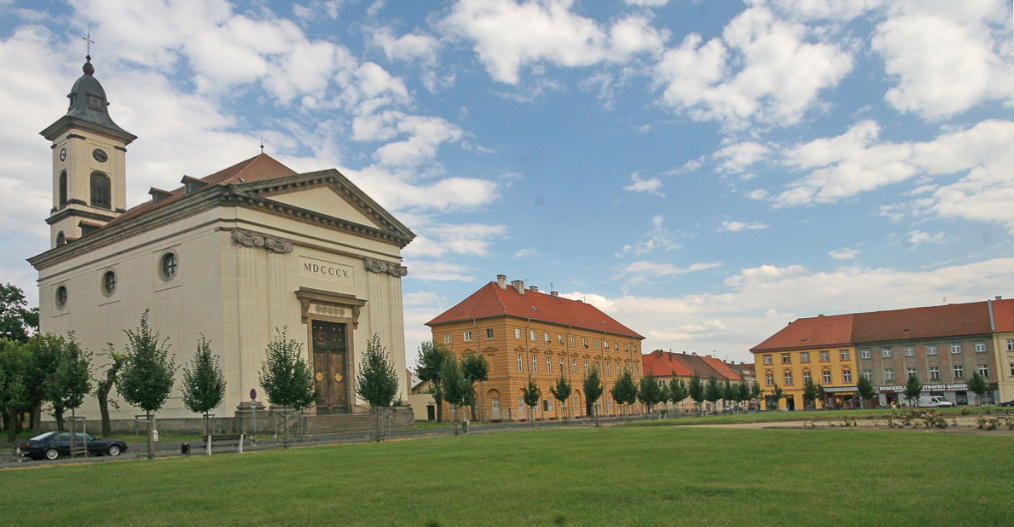
I wanted to go to Terezin because it was the site of Theresienstadt, a concentration camp built by the Nazis to resemble a normal town. I wondered how they maintained the illusion – the deception. I wanted to see it at first hand.
This concentration camp was cast in the image of a town, with a “beautification program”, including planting 1,200 rose bushes, cleaning the streets and buildings, constructing a “child care pavilion” complete with sandbox, merry-go-round and wading pool. Food rations were doubled. There were concerts, cabaret and theatrical performances and a soccer match – all carefully staged and rehearsed. This was all done to hoodwink the Red Cross visitors, who were either Swiss or Danish.
Unlike other concentration camps, Theresienstadt had been a garrison town under the Habsburg Empire with plenty of barracks where you could conveniently house the prisoners – an interim place to send those destined for the gas chambers at Auschwitz, Dachau or Buchenwald. Despite all the show, these barracks were squalid and there was never enough food.
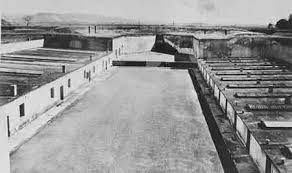
Hans Adler, a Jewish Bohemian author, was sent to Theresienstadt, where he was incarcerated for two years and saw how the camp was structured. It was presented as a self-governing Jewish settlement, with an internal Jewish administration subservient to the SS. The prisoners were guarded by 150 Czech “gendarmes”; there were about 20 SS officers on site and mostly out of sight, yet they controlled Theresienstadt through the Jewish Council of Elders.
These Jewish inmates were granted privileges which the ordinary Jewish prisoners did not have. They lived as family, and they were given orders verbally by the SS. Nothing was written down between the two.
The Council of Elders determined who was to be transported to the gas chambers. Benjamin Murmelstein, a Ukrainian-born rabbi, worked closely with Adolf Eichmann in Vienna as the only surviving rabbi and then as the last chief elder of the Council who collaborated with Eichmann’s Central Office for Jewish Emigration. He has been singled out for universal revulsion by the Holocaust survivors yet after the War lived in Rome never charged with any war crimes. He lived long enough to see his boss, Adolph Eichmann, executed by the Israeli government. The chain of command descending from Eichmann ended with The Council choosing those to be transported to the gas chambers, according to the categories demanded by their Nazi superiors.
Rabbi Murmelstein was not the only one. There were indeed many members of the Council, a post which provided protection for their families. So, there were many others. In a review of Adler’s book about Theresienstadt between those years 1941 and 1945, the NYRB reviewer, Thomas Nagel, recounts referring to Adler:
The decision to hide the truth strikes me as comprehensible but appalling – though none of us can know what we would have done in the circumstances. Adler, who must have learned about it after the war, seems unable to come to a judgement about the Elders’ decision; he reserves his condemnation for individuals who, knowing the truth, not only tried to spare their friends but used the transports to get rid of people who were giving them trouble. For example, after Vladimir Weiss, a member of the “Detective Department”, sent the Jewish Elder Paul Eppstein a detailed complaint of flagrant corruption in the allocation of food, he and his family disappeared on the next transport.
Yes, we hear much about the descendants of Holocaust victims but what of those who count this Council’s members as their relatives?
Hans Adler may have survived the War, despite being part of the protected group in Theresienstadt. However, he was eventually sent to Auschwitz near the end of the War. As was his wife, Gertrud, a doctor, deported there. She refused to leave her mother and went to the gas chamber in late 1944. Adler did not join her.
In all, Adler lost sixteen members of his family – a survivor to live out his life in a “community of guilt” With how many others?
I am not one to visit former concentration camps, but the whole account intrigued me. That intrigue about Theresienstadt has not dimmed.
Dutton in January
In the end, the “cost of living” isn’t about the prices on grocery shelves, it’s about the distribution of income. In Australia, income has shifted from wages to profits and from low- and middle-income earners to those in the top 10% of the income scale and, even more, to the handful of “rich listers” whose growing wealth has outstripped that of ordinary Australians many times over. – John Quiggin Guardian Spotlight 19 January 2024.
One of the political axioms, at least when I had a handle on the production of political party policy, was to float ideas in January when political activities were light. I remember for instance that we floated the idea of a deferred interest mortgage to test how acceptable it was to be incorporated into the Liberal Party housing policy.
Other policies were tested at other times; under the influence of John Knight, later a Senator for the ACT, Bill Snedden reversed the China policy of the Liberal Coalition which existed under Prime Minister McMahon. That resulted in Snedden being invited to visit China, which we did in July 1973; so much was positively achieved that whilst we were there a late invitation came for Snedden to meet Chou-en-lai, then having his own difficulties with the Gang of Four who were very much in the saddle then with the blessing of Mao Zedong. Whitlam came to China later that year. So instead of an ongoing pointless ideological conflict, there was agreement on both sides of Australian politics.
Contrast this with the footprints of Dutton. He wheels out the commercial decision not to embroider Australia Day with Jingo Kitsch as a reason to imply that it is a sacred festival. January 26 was a convenient holiday because it signalled the end of summer holidays, when industry had shut down. All January for staff holidays. That it was no more; no less.
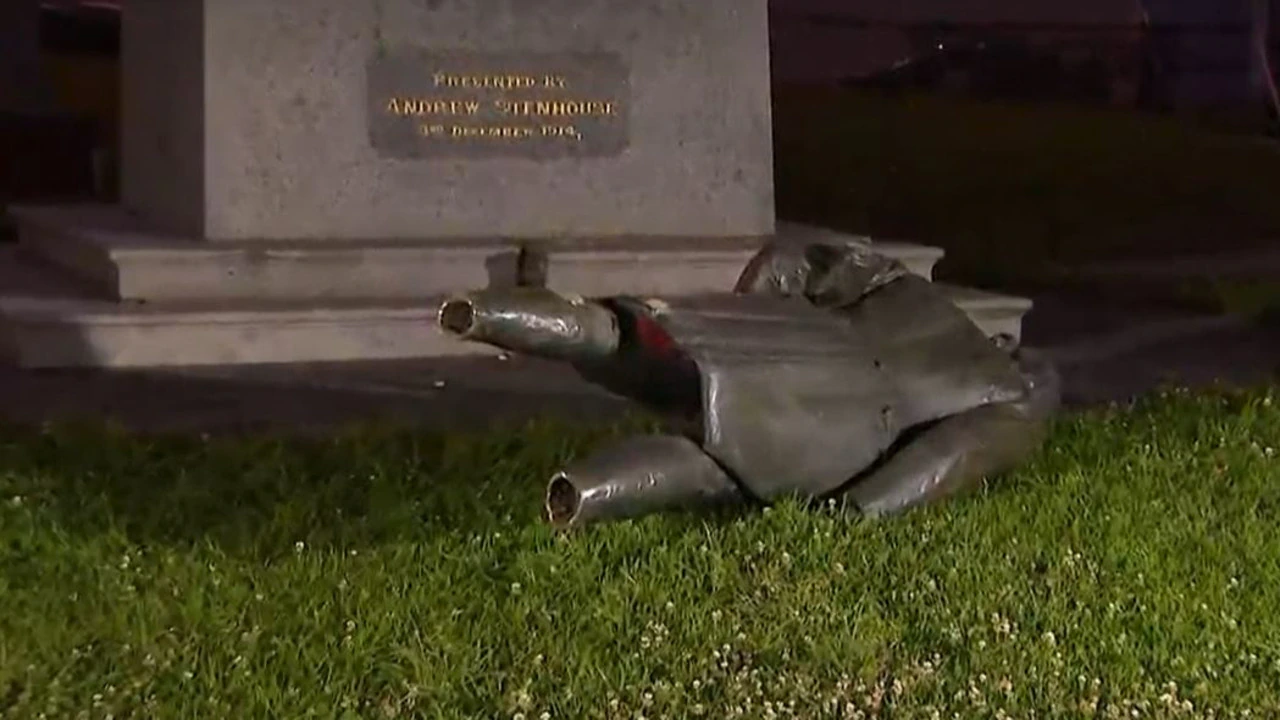
After all, it is only a celebration of Arthur Philip founding a convict colony which he called New South Wales on that day in 1788. If that is worth celebrating once stripped of its being a convenient marker, then we invite all the mindless controversy that people like Dutton wish to provoke. There are influential people who hanker for an imaginary white picket fence Australia. It never existed, but these people bristle when the monarchy is threatened, alteration of the flag promoted and the sanctity of Australia Day and Anzac Day disputed.
I remember these were issues of the Liberal Party Coalition when they were trudging through the policy desert. Once, when reporters listened to me and asked me what was to be discussed at the upcoming Liberal Party meeting, it was a time when the Parliamentary Party had spent the previous meeting discussing the Flag. I replied it was discussing the party policy on heraldic symbols. This did not make me many friends, but metaphorically that is the territory where Dutton is grubbing around.
John Quiggin has raised a reasonable point, which impinges on policy considerations at a time when the Labor Party until this week continued to commit to make the rich even richer with taxation concessions and when there seems to be idolatry of the petroleum and mining industry while Planet Earth is going down the toilet. It is a time when Dutton has selectively singled out trivia to widen community divisions rather than address community concerns when political collaboration is needed urgently.
Forget his divisive utterances, which only emphasise unnecessary cracks in the polity and which we could do without; and go about devising a policy which adopts the Quiggin analysis as a starting point.
At least, the Labor government have caucused this week, to ratify the Albanese Cabinet decision to make the taxation changes more equitable, rather than giving the wealthy an additional polo pony. Predictably, the bleat of broken election promises goes up from Dutton and his cronies, fresh from return from being “duchessed” by Gina Rinehart.
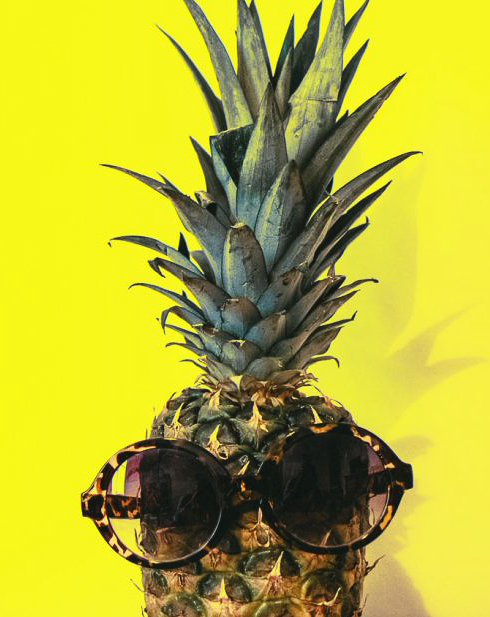 Dutton, you should grow up, and address measured analyses such as that projected by John Quiggin as the Government seems to have done; instead of roaming around devising the heraldic symbols on the Dutton shield. A pineapple rampant?
Dutton, you should grow up, and address measured analyses such as that projected by John Quiggin as the Government seems to have done; instead of roaming around devising the heraldic symbols on the Dutton shield. A pineapple rampant?
Mouse Whisper
I owe this one to the Boss. There is this Virgin Airline advertisement with this vivacious flight attendant being wheeled across of the tarmac aboard a gangway with a horde of people in pursuit. Not a plane in sight. What a metaphor! A virgin airline is one never to be violated by an airplane?

